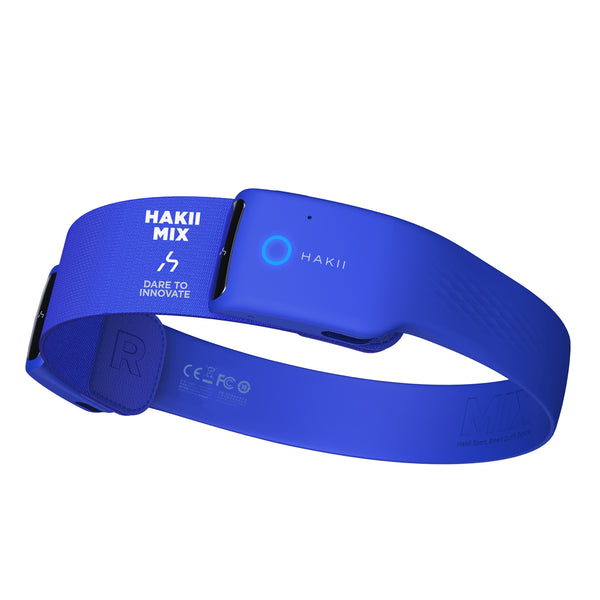Walking on the street nowadays, you will see more and more people wearing something shaped like earphones, but not stuffed into the ears. These things are likely to be open-ear headphones, a new type of headphones that are currently on trend. Do you also want to get one of these innovative headphones? The following article will introduce you to the technology, advantages and disadvantages, and product recommendations of open-ear headphones.
What are open-ear headphones
Open ear headphones are a type of headphones that do not cover or go inside the ear canal. Traditionally, users insert earphones into ear canal, or cover user’s ears in order to hear the sound. While this is a standard way for earphones to transmit sound, it also comes with some flaws, such as blocking too much external sound, hygiene problem, ease of falling during sports etc., and this is where open-ear headphones come in.
Open-ear headphones usually sit on the cheekbones just in front of the ears and use vibrations or directional sound to transmit sound directly to the inner ear. This allows the ear canal to remain open and unrestricted, which can be beneficial for those who need to stay aware of their surroundings while listening to music or taking calls.
Open ear earphones are particularly popular among athletes and outdoor enthusiasts because they allow them to enjoy their music while still being able to hear traffic, pedestrians, and other potential hazards. They are also beneficial for individuals who have hearing loss or other medical conditions that affect their ability to use traditional headphones.
How do open-ear headphones work
Depending on the technology the product use, there are two types of open-ear headphones: bone conduction headphones and air conduction headphones.
The technology behind bone conduction headphones involves the use of transducers that convert electrical signals into mechanical vibrations. These vibrations are then transmitted through the bones in the skull and directly to the inner ear, bypassing the eardrum and the ear canal. This creates a unique listening experience that allows users to hear both their music and their surroundings simultaneously.
The air conduction headphones, on the other hand, work more like traditional headphones. Like traditional headphones, the sound was sent to inner ears via air. But unlike traditional headphones, air conduction headphones do not need to cover user’s ears. They are positioned at a place near the ears, and broadcast sound to users’ ears. And in order to reduce sound leakage, some company like HAKII use directional sound technology to send beam of sound to users’ ears.
Open-ear headphones vs closed ear headphones
Benefits of open-ear headphones
Safety

Safety is one of the main selling points of open-ear headphones. By design, open-ear headphones do not cover your ears, so they will allow you to remain aware of your surroundings while listening to music or other audio content. This is especially important for outdoor activities, such as running, cycling, or walking, where you need to be able to hear approaching traffic, people, or other potential hazards. Closed ear headphones, on the other hand, can block out external sounds and create a safety risk, particularly in busy or noisy environments.
Comfort
Open-ear headphones tend to be more comfortable to wear for extended periods of time, as they don’t create the same amount of heat buildup or pressure on the ears as closed ear headphones. This is because they don’t create a seal around the ear, which can trap heat and cause discomfort. Additionally, some open-ear headphones come with lightweight materials and ergonomic shapes that fit comfortably on the head and ears.
Adaptive
Unlike closed ear earphones that are inserted into ears, open-ear headphones are wore externally, which means people with different sizes of ears will be able to wear the headphones. This is very important to some headphones users because some people may have smaller ears, and they may find it difficult to wear traditional in-ear earphones, but with open-ear earphones, they will be able to enjoy using earphones no matter how big or small their ears are.
Hygiene
Open ear headphones tend to be more hygienic, as they allow air to circulate and prevent moisture buildup, which can lead to bacterial growth. This is especially important for those who use headphones for extended periods of time, as sweat and oil can accumulate on the ear pads and cause odor or irritation. Additionally, some open ear headset come with removable and washable ear pads, making them easy to clean and maintain.
Benefits of closed ear headphones
Noise Cancellation
Due to the fact that open-ear earphones do not cover users’ ears, they may not perform as good as closed ear headphones. Closed ear headphones by nature come with “built-in” passive noise cancellation – to block out noise by covering ears. Some closed ear headphones also provide active noise cancellation feature – to cancel out noises using inverted soundwaves. But for open-ear headphones, it will be more difficult to provide similar feature, because without passive noise cancellation, the headset will have more noises to cancel out.
Less Sound Leakage
Open ear headphones have vents or openings in the ear cups that allow air to flow in and out, which is necessary to create a more natural sound. However, this also means that sound can escape through these openings and be heard by others. Closed ear headphones, on the other hand, have a design that creates a seal around the ears, which helps to prevent sound from leaking out. Open-ear earphones try to reduce the sound leakage. For example, the company HAKII uses directional sound technology to send beam of sound to users’ ears, so people around can hardly hear from the headphones.
Natural Hearing
Closed ear headphones by nature can provide natural hearing experience. Since closed ear headphones transmit sound through air vibration, which is how human ears hear from outside world, the sound from closed ear headphones will sound like how the sound should be, and has less distortion.
On the other hand, open-ear headphones may or may not be able to provide natural hearing. For bone conduction headphones, the sound will be transmitted via bone instead of air, which is a different medium, therefore the sound may be distorted during the transmission. But for air conduction headphones, it uses air as medium to transmit sound, which is the same medium as closed ear headphones, therefore they will offer the same non-distorted sound to users.
Better sound quality
Since open-ear headphones is a relatively new type of headphones, it still has room to improve, and one of these field would be sound quality. As closed ear headphones provide sound in a sealed environment around the ear, they will allows for better bass response and overall sound clarity. Open-ear headphones, on the other hand, allow more sound to escape and can be affected by external noise, which can result in a less precise and detailed sound. And for bone conduction headphones, the bone medium the headphones use will also cause sound distortion.
However, this does not mean that open ear earphones are inherently worse than closed ear earphones; it depends on the specific design and intended use of the earphones. For instant, the HAKII Mix headband headphones adopt 22nm extra large speaker units, providing clear and bass-rich sound that is comparable or even outperform standard closed ear headphones
Recommended open-ear headphones
SHOKZ OpenRun (AfterShokz Aeropex)
Previously known as AfterShokz Aeropex, SHOKZ OpenRun are bone conduction headphones for sports and fitness, especially for running outdoors. They are comfortable, stable, well-built, and water-resistant, and allow you hear your surroundings while listening to music. Coming with physical buttons for controls and digital assistant, the product have more bass, less vibration and sound leakage than predecessors, and decent call quality.
Bose Frames Tempo
Bose Frames Tempo are sport sunglasses that deliver open ear audio. They are focused on sports and virtual training, and offer a steady fit and total awareness. They have clear improvements over the original Bose Frames, but still have limited bass and battery life. The tiny speakers pack a powerful punch and produce clear sound
HAKII Mix
HAKII Mix is an open ear headphones that is in a headband style, and is one of the first product in such style in the marketing. This smart headband headphones use directional sound and patented abTube technology to transmit sound directly to users’ ears, so the sound leakage is in an acceptable range for the 22mm extra large speaker drivers. And as an air conduction headphones, the product provide natural hearing experience, with enhanced sound quality powered by its Liso algorithm. With the headband design, HAKII Mix will not only allow users to hear the surrounding during sports, it can also provide extra features like secured wearing and sweat blocking

Conclusion
Open ear headphones are new type of headphones that allow user to hear ambient sound while enjoying music. Comparing to traditional closed ear headphones, open ear headphones has its advantages and disadvantages, and people who exercise outdoor often, or don’t like or not able to wear traditional headphones will find this type of product beneficial.




